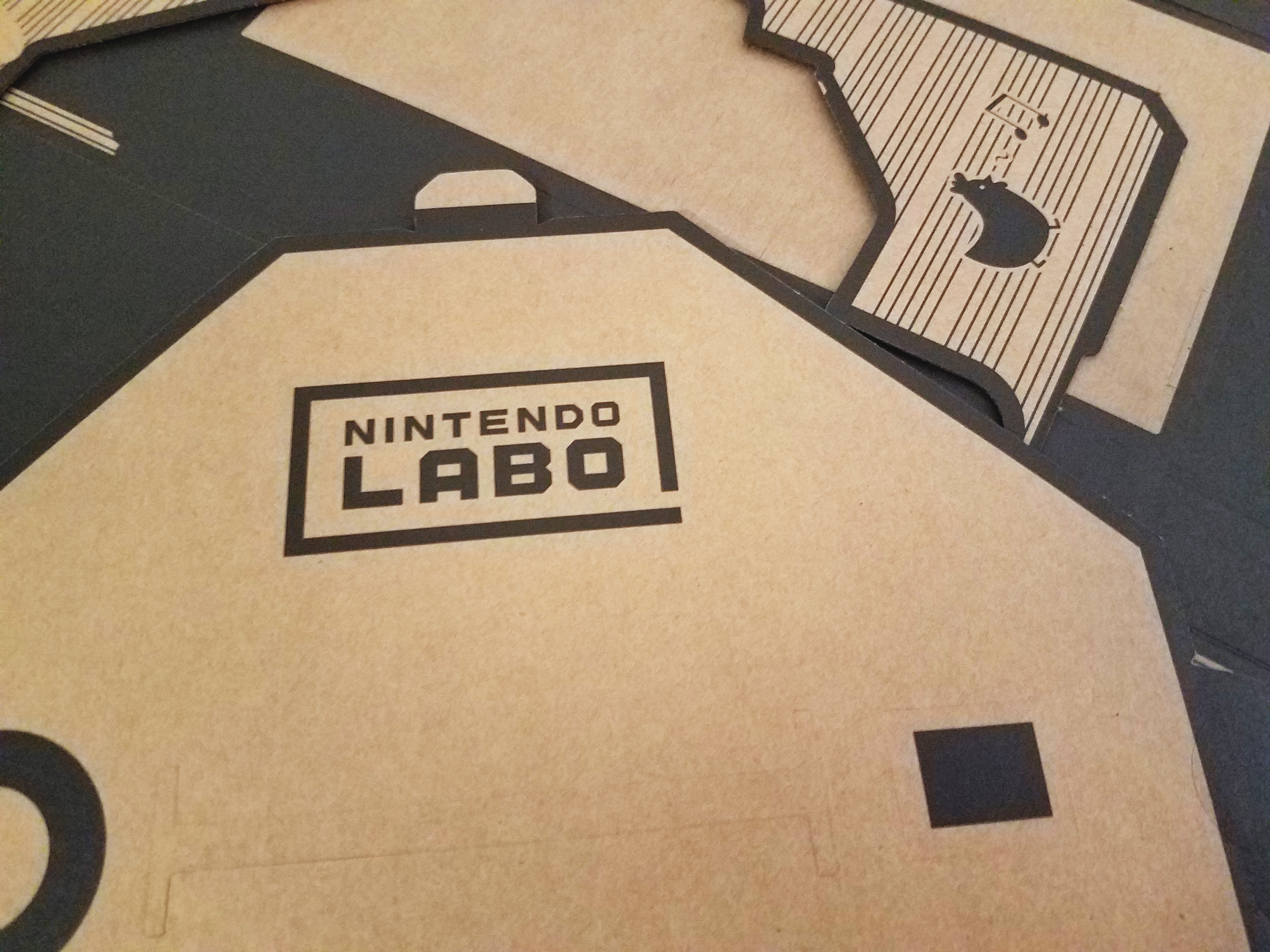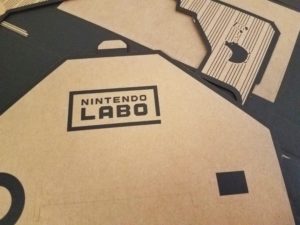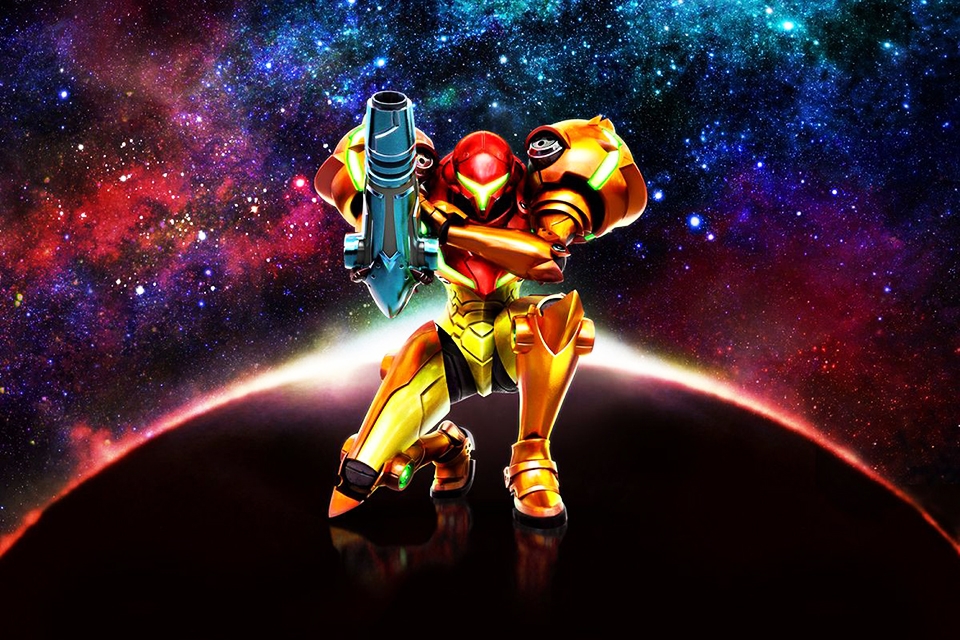

The primary material used to construct Nintendo Labo is folded cardboard. Kits start at $69.99.
Zach Landau | Editor-in-Chief
04/26/2018
Back in the yesteryears of this past January, I wrote about my unfettered excitement for Nintendo’s latest doohickie, the Nintendo Labo. The hybridization of video games and model kits, Labo promised to justify all of the bells and whistles crammed into the Nintendo Switch console.
How? By building toys out of cardboard and other bits and pieces. Is it fun? Well, that depends on how much you like doing the same thing over and over again, but I’m getting ahead of myself.
The actual materials included with Nintendo Labo are a mixed bag. The cardboard that most “Toy-Cons” (the actual models that you make) are constructed with is a little flimsy. More than once, it folded in ways I didn’t intend, and punch outs would sometimes peel the top layer off. Even when everything was put together, the contraptions felt a bit off. The pieces fit very well with each other, but the Toy-Cons as a whole shook and bended easily.
The other bits of material also feel a little on the cheap side, which is understandable. What isn’t understandable is how difficult they are to handle. Reflective stickers are tricky to peel from the sheet, and “sponge stickers” (bits of foam with adhesive on the back) especially resist being separated from each other.
I elected to construct the piano first, and it was a pretty poor introduction. Making the holster for the controller was fine enough, but the bigger pieces were difficult to attach together without proper support. I needed an extra set of hands, leading me to wonder how a child was supposed to handle this project alone.
After the body was built, the keys were next, and the biggest issue with Labo reared its ugly head. As excellent as the Make mode is — the Switch provides easy-to-read instructions and 3D models of the pieces that you can zoom into and rotate — it will show you where each and every fold is and how to fold bits of cardboard. Incessantly. For three hours.
If you’re looking to play a fun game while making your Toy-Cons, try counting the number of times the instructions will show you how to make the same fold. Bonus points are awarded every time the instructions try and fail to make a joke about their redundant nature.
And I know that Labo is made for kids, but kids can’t have this much trouble understanding. Can they? I don’t want to find out.
On the instructions: I do think they are the best part of Labo after the actual act of making Toy-Cons. However, the UI is a bit unwieldy. Dragging the forward button to speed up redundant sections is difficult if your hands are already full of cardboard. Unfortunately as well, dragging fast forward puts your finger right on the chapter button, and I accidently made the mistake of resetting the key segment. Because you can’t skip steps entirely, I had to sit through three minutes of folding cardboard until I got back to where I was. This is such a painful oversight on the part of the developers that I’m shocked they left it in.
After installing the keys (a process made more labor-intensive because they refused to stay in place until their neighbors were crammed in with them) and putting together the rest of the piano, I finally slid the Switch into the holder and started plinking away. To Nintendo’s credit, the finished product works exceptionally well, though not as perfect as I would hope. Part of the issue is that the whole package is unwieldy; push a lever here, press a switch there, and the piano will shift and buckle. Labo doesn’t end up feeling cheap, per se, but it’s doubtful that kids will have the care and dexterity to handle some of the more delicate controls of the console.
But what I really wanted to know is how the whole thing worked. Ever since the Switch was announced, those aforementioned little bits of tech packed into the device fascinated me. The biggest appeal of Labo, I thought, was going to be the ability to take a look under the hood and see how all of that tech functions.
However, in perhaps the greatest disappointment surrounding Labo, Nintendo had to get in the way and gamify the educational aspect of the device. Instead of offering a comprehensive guide to the ins and outs of Toy-Cons, Nintendo crafted what can be described as something of a walking tour for Labo. Three annoying, loquacious, pointless characters stand between audiences and the magical tech that powers Labo, and after sitting through tedious minutes of pointless dialogue, I immediately left Discover mode. No. I’m not wasting my time just to see something that I can look up on YouTube.
Again, I know this is meant for kids, but what kid wants to slowly read through an owner’s manual just to get to the cool part with sensors and levers?
Also, whose genius idea was to put the owner’s manual in a game mode? Instructions on how to fix Toy-Cons or how to make other devices are locked behind endless, trite dialogue. If your kid’s piano stops playing, tap your Switch repeatedly as three cartoons slowly explain to you how the cardboard folds until you get to the one line of dialogue you need for the proper fix. To be fair, the Discover section does a great job explaining the Toy-Cons, and I can definitely imagine kids wasting an afternoon just exploring through it. But as a practical tool, it fails, and incredibly so.
Play mode also falls quite short of expectations. There is a ton to do with Toy-Cons once they’re built, but Nintendo really leans into the “toy” part of that name. There’s little in guided content after construction, so if you’re a tone-deaf schlub like myself, you’re not getting anything else out of the piano. Same goes for the house; it features a bizarre, Tamagotchi-esque monster thing that will haunt me until the day I die, but other than that, almost completely barren.
That is not to say there isn’t a ton of potential in Labo, because there is. The Labo-engineered music already coming from the internet proves just how capable the tech is, and the Garage looks to add tons of functionality for years to come. I honestly cannot wait to read the blogs of those who make intricate games with the equipment, as that’s where the enthusiasm and real potential for the device lie.
I don’t want to give the impression that I didn’t have a good time with Labo, because I did. There is an inevitable charm to building Toy-Cons much like there’s enjoyment to be found building, I don’t know, model airplanes? (God am I getting old.) The ingenious ways to turn bits of cardboard into moving, mechanical parts are similarly fascinating, and the process of watching as flat sheets become models then whole Toy-Cons delights as much as it frustrates. For every tab that refuses to stay in place there are ten others that snap together snuggly, and my principle enjoyment emerged from the moment-to-moment construction rather than the finished product.
But what baffles me is who this product is for. I can see some of Labo’s appeal for pre-teens, maybe, but any younger, and they’ll inevitably rip and tear something. Even if they are older, kids will just be frustrated by the slow instructions and its really, really childish aesthetic. Also, since the game can’t be downloaded, you better hope your kid doesn’t misplace the cartridge, or else you’re stuck with a box of useless cardboard. Also, also, I hope you like organizing, because Labo comes with a litany of little bits of tat to keep track of.
But aren’t all toys like this? I honestly can’t remember, it’s been so long. Even if they are, I would be remiss to not say it feels weird to live in a world where Nintendo is actually legitimately a toy company.
All in all, was Labo worth the price for admission? Yeah, I would say so. I am really excited for the potential in this thing, and whatever complaints I had were minor enough to not really taint my experience. Labo might be the must-own title for the Switch if only because I can’t imagine anything like it existing again.




